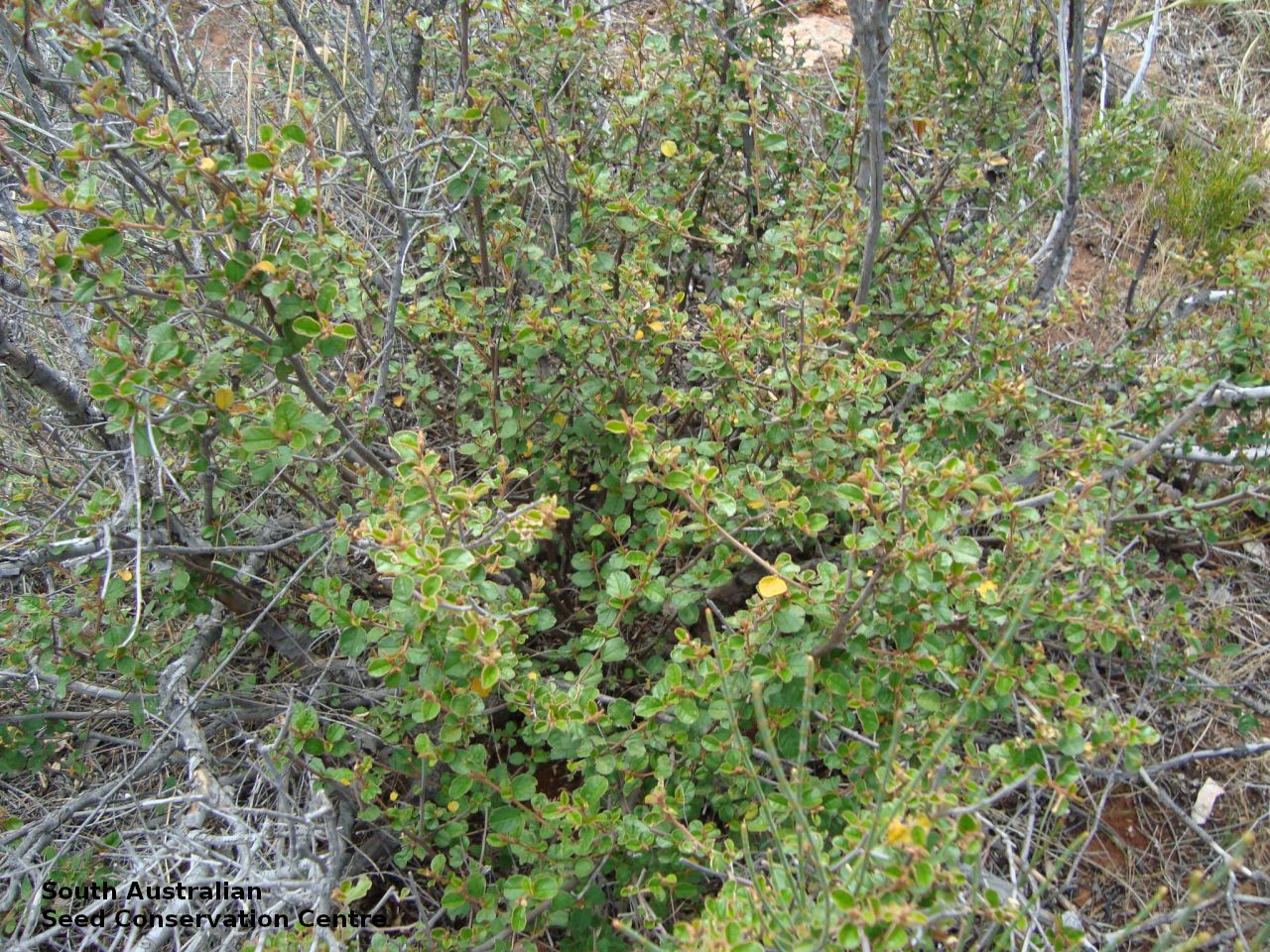
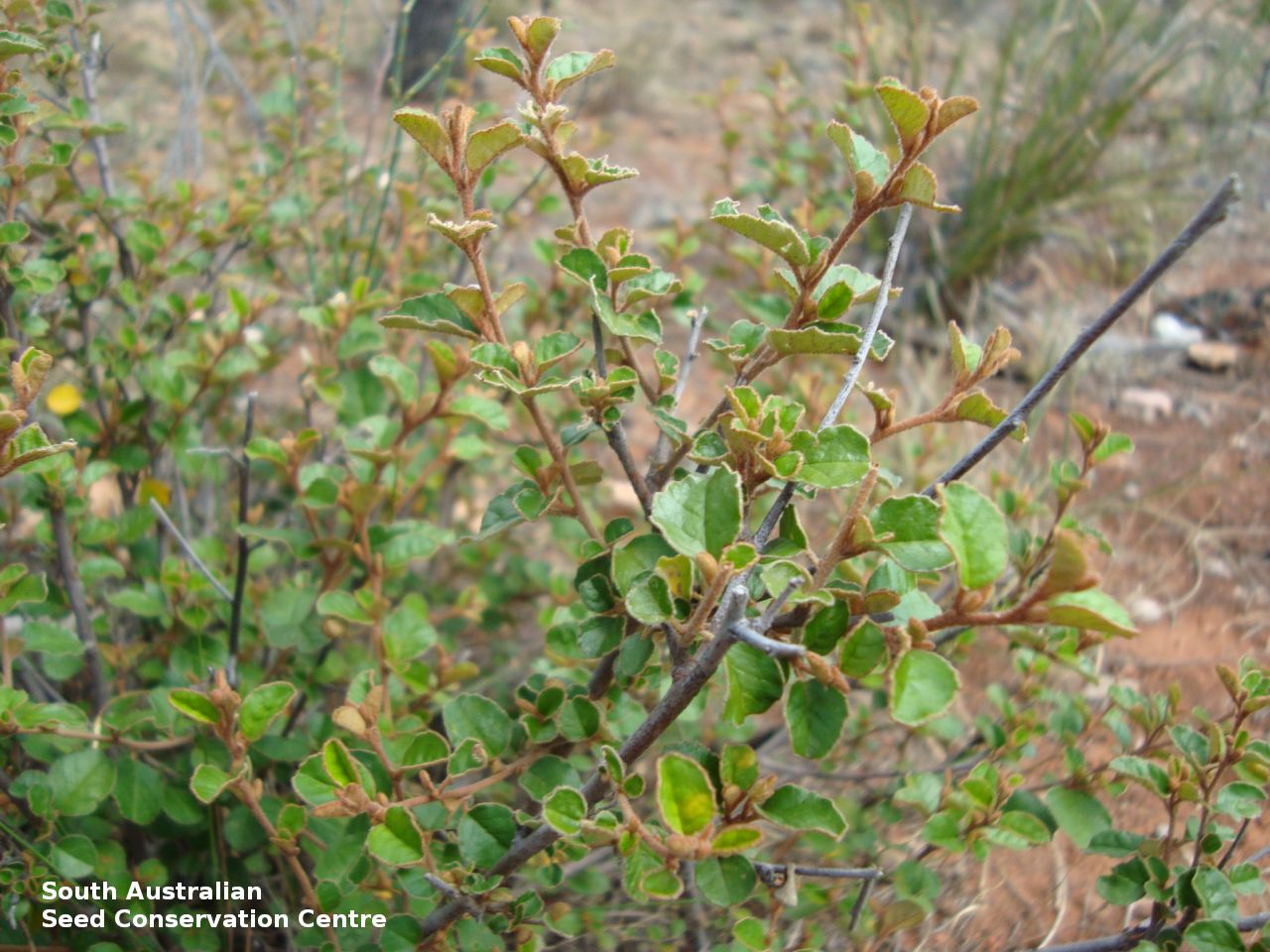
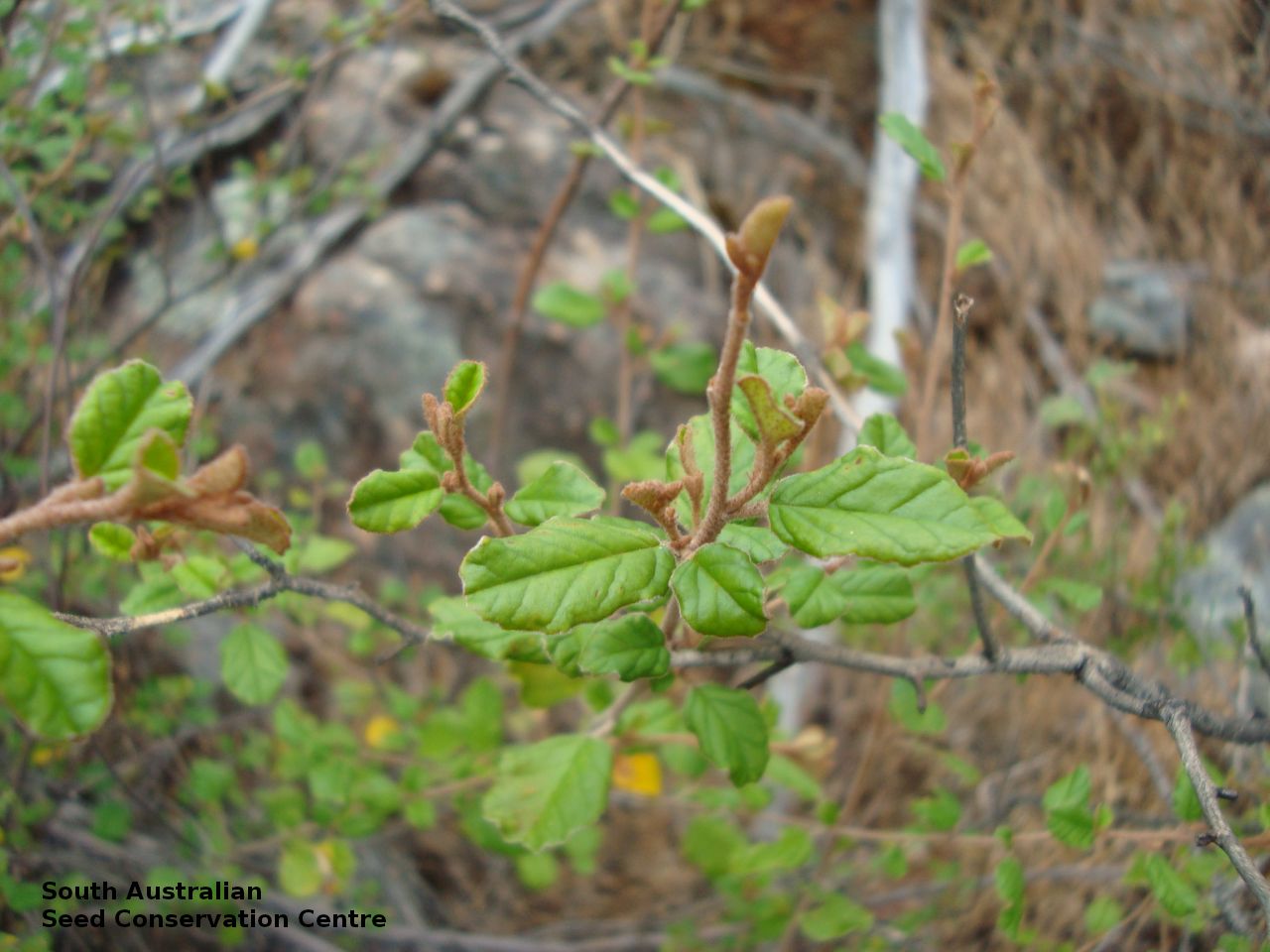
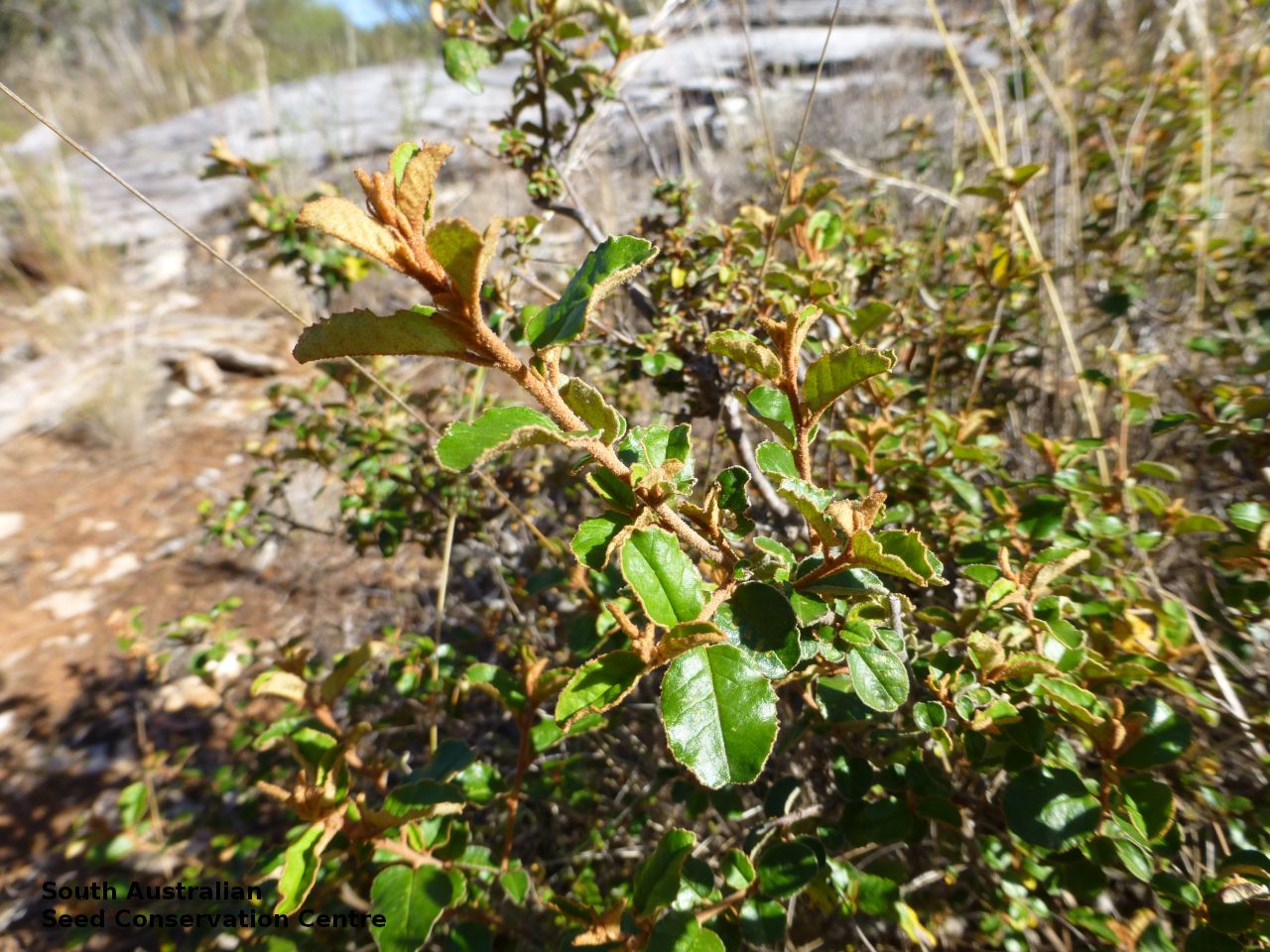
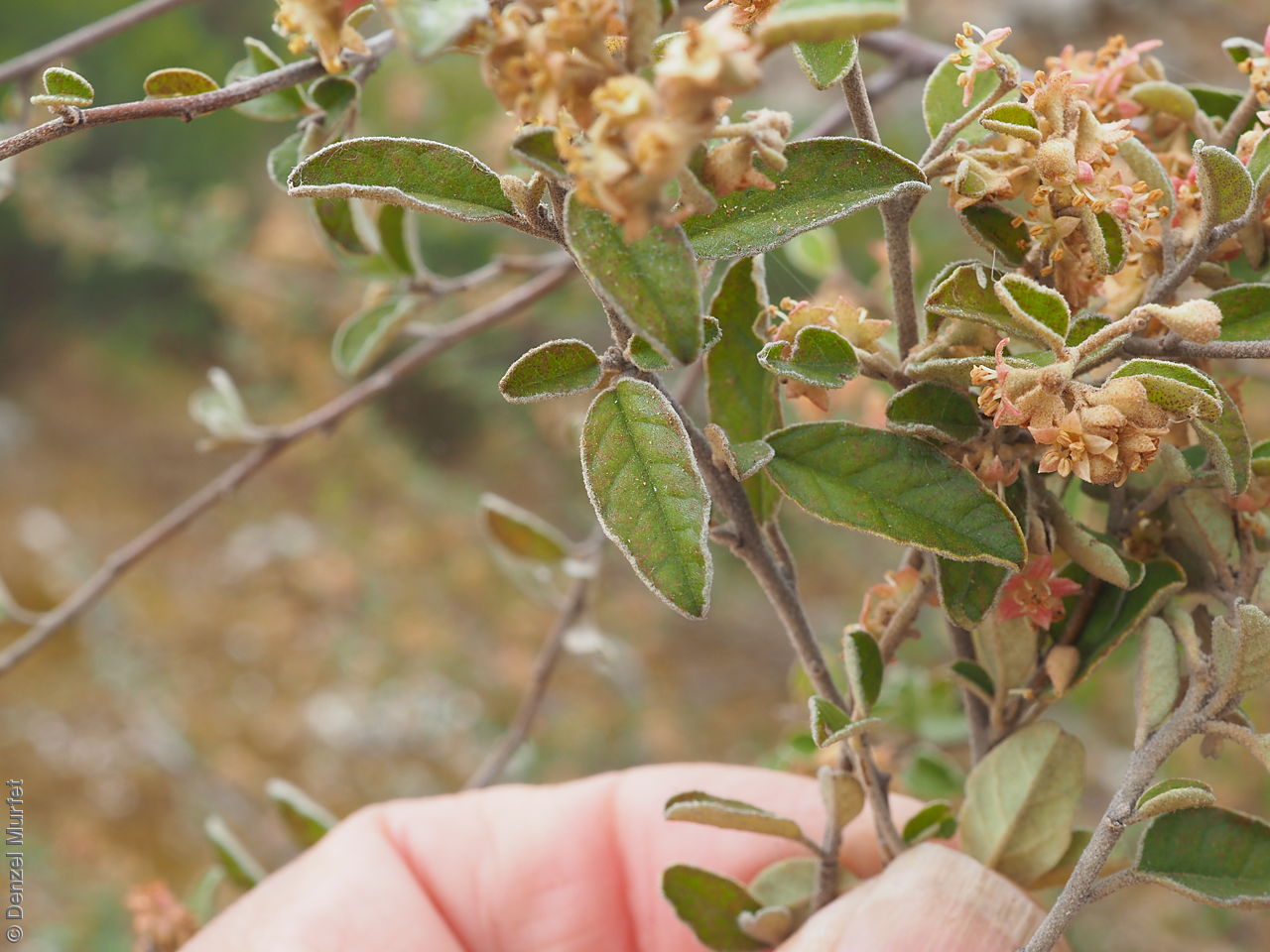
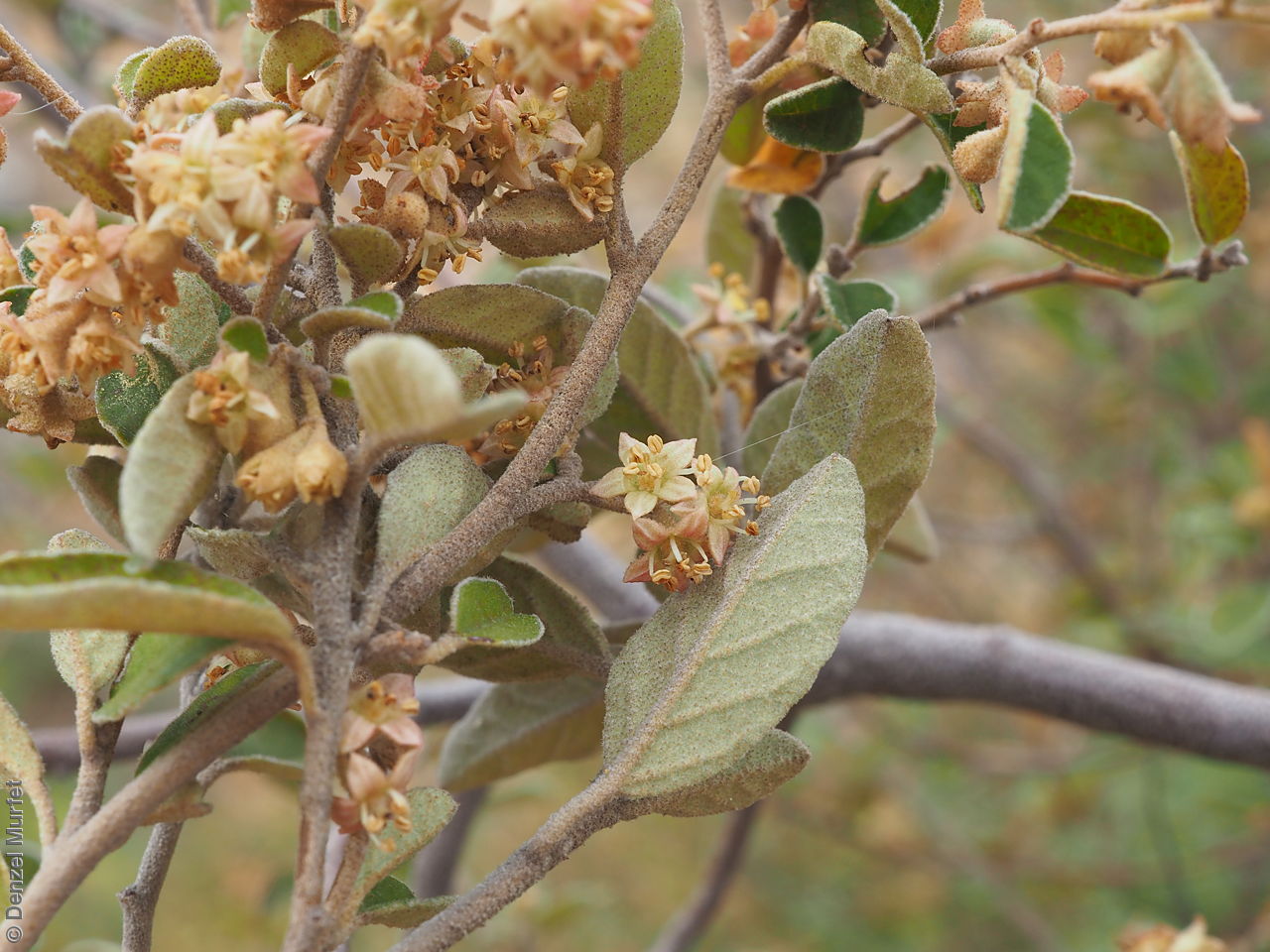
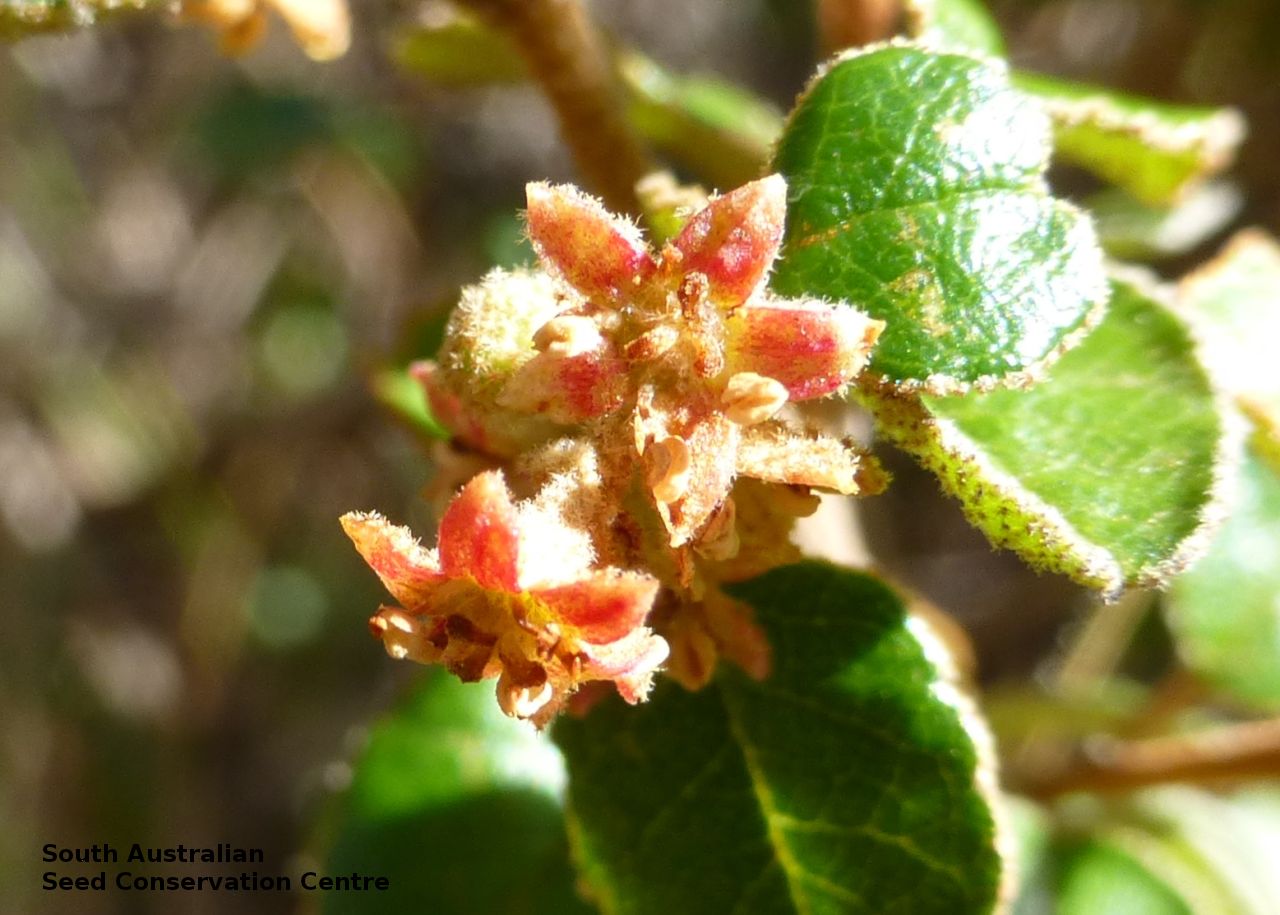
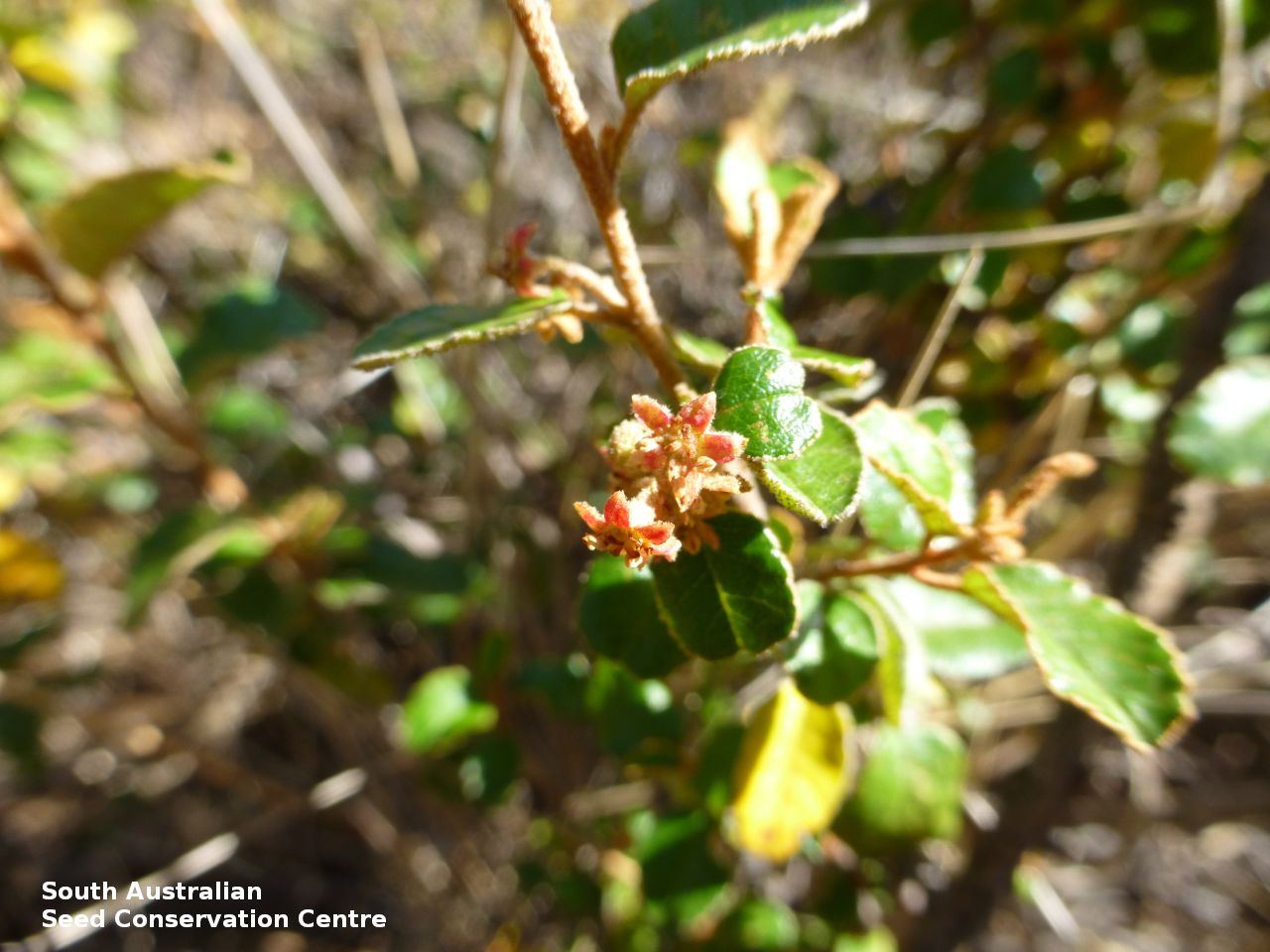
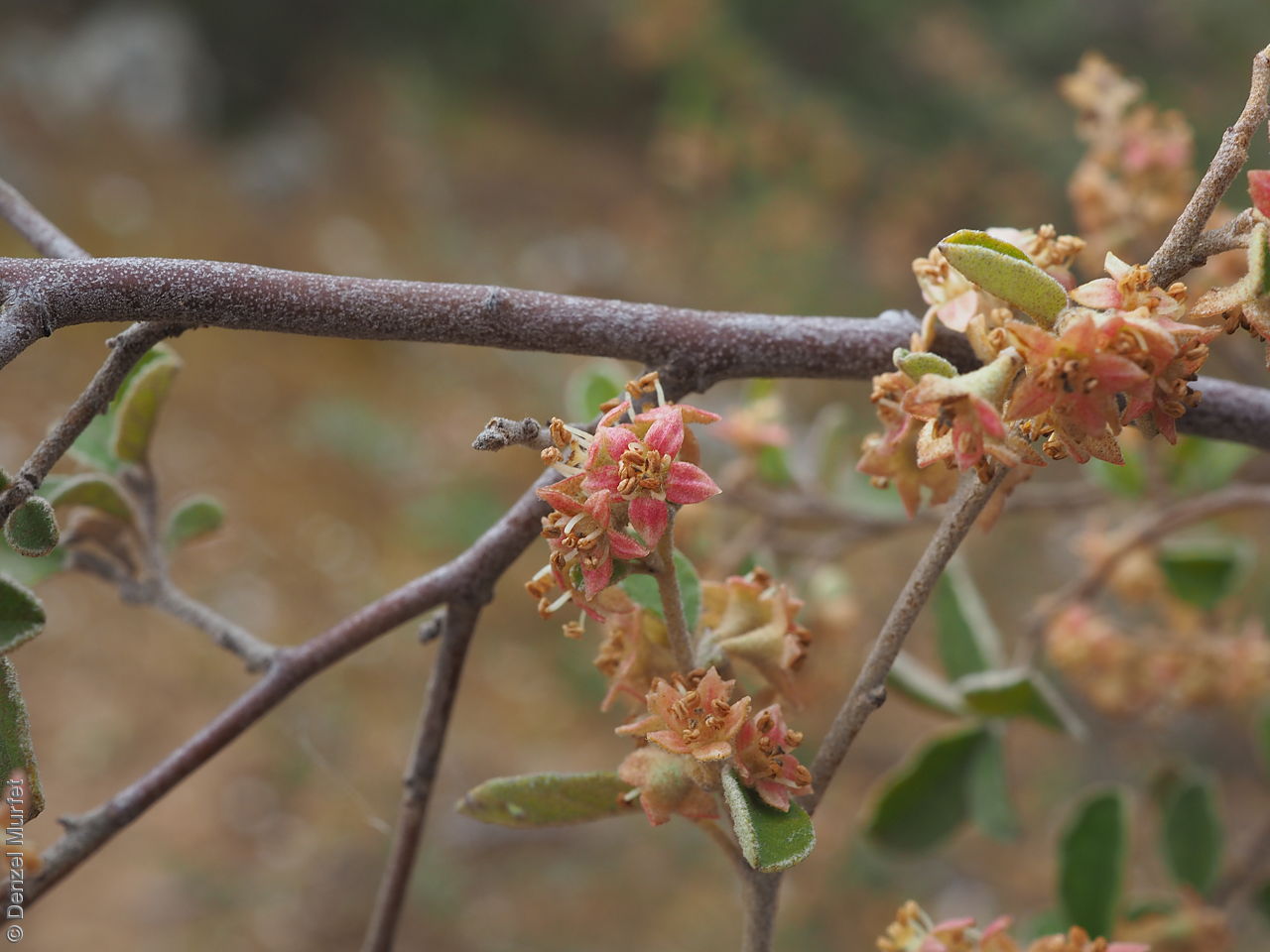
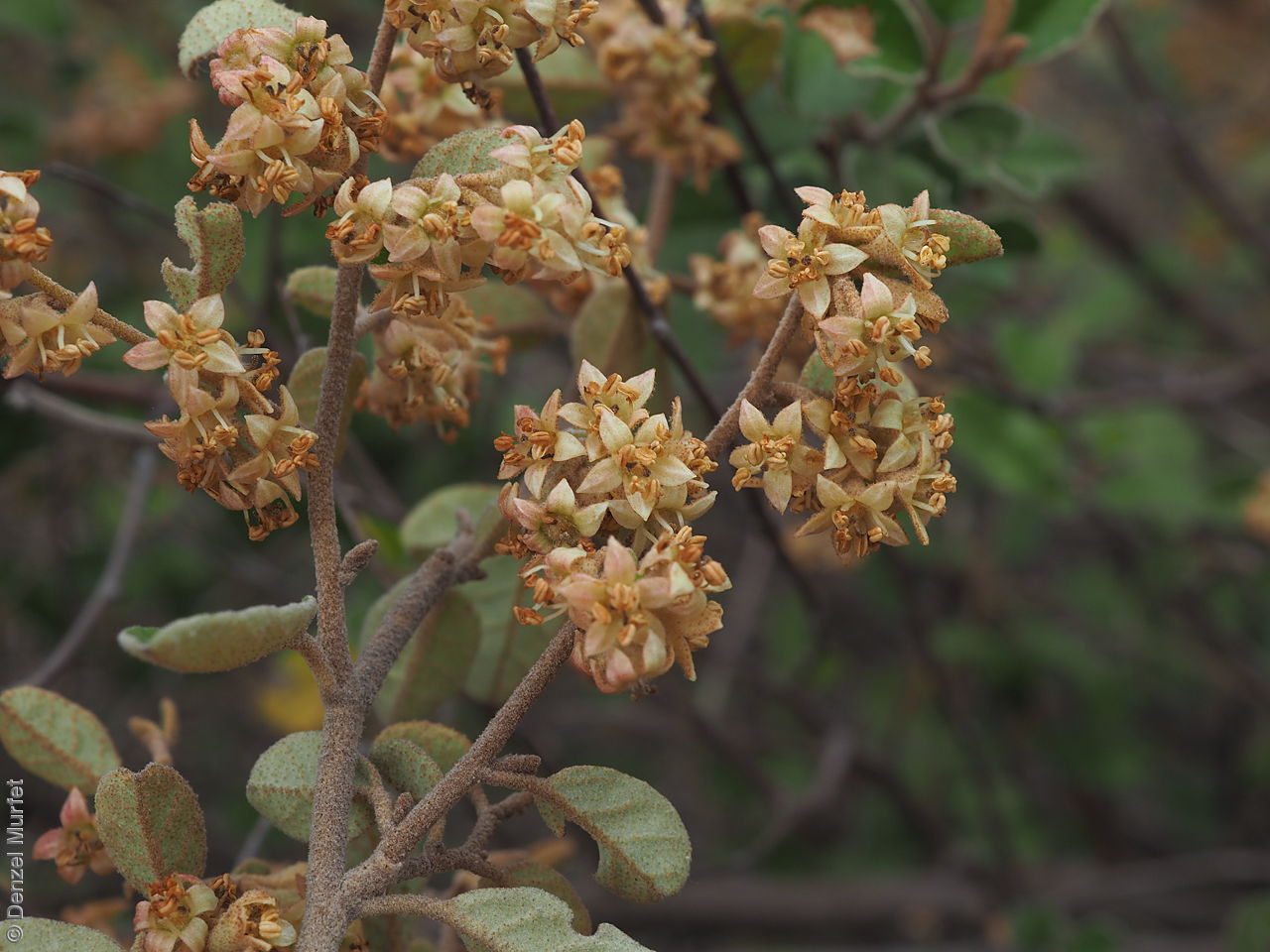
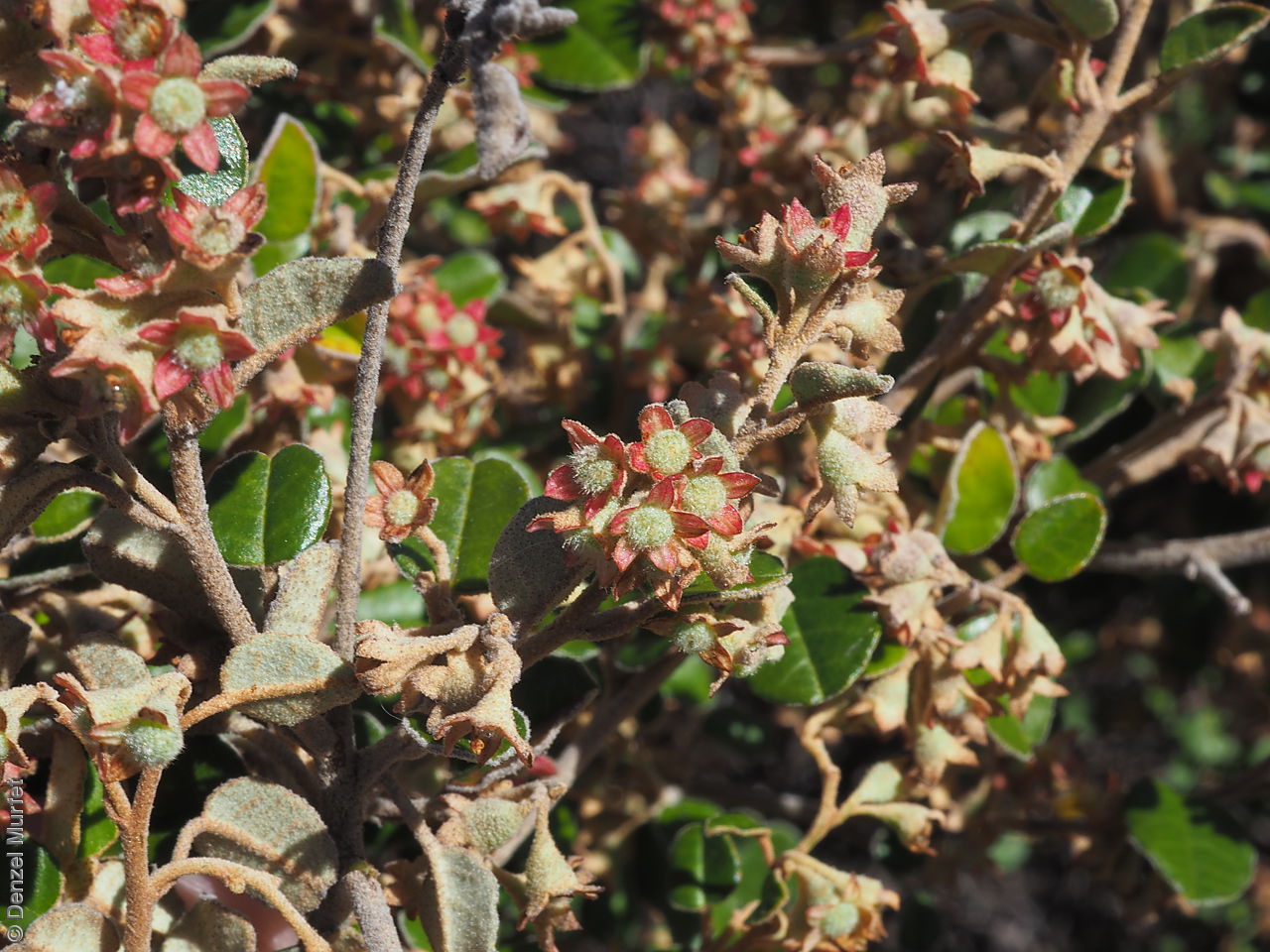
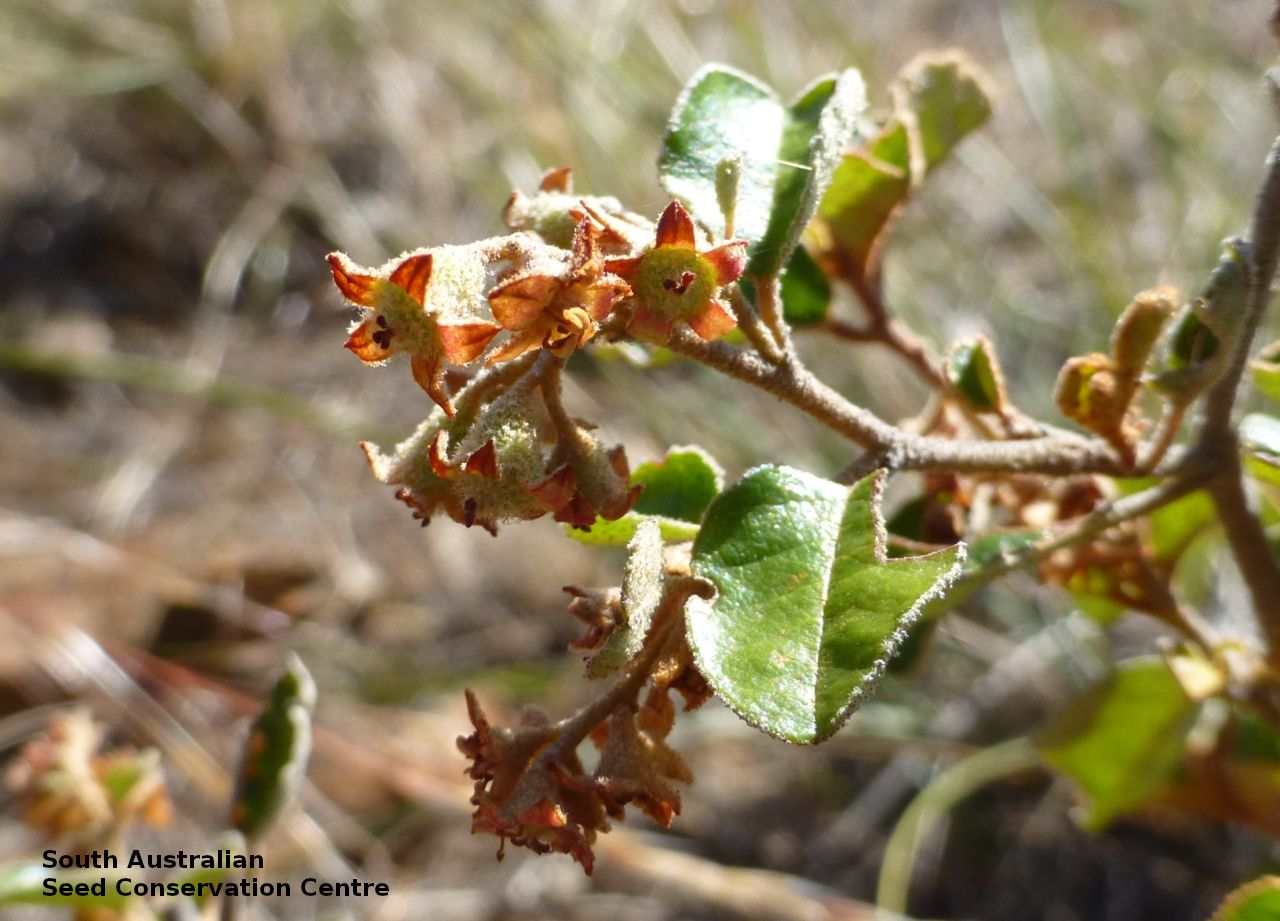
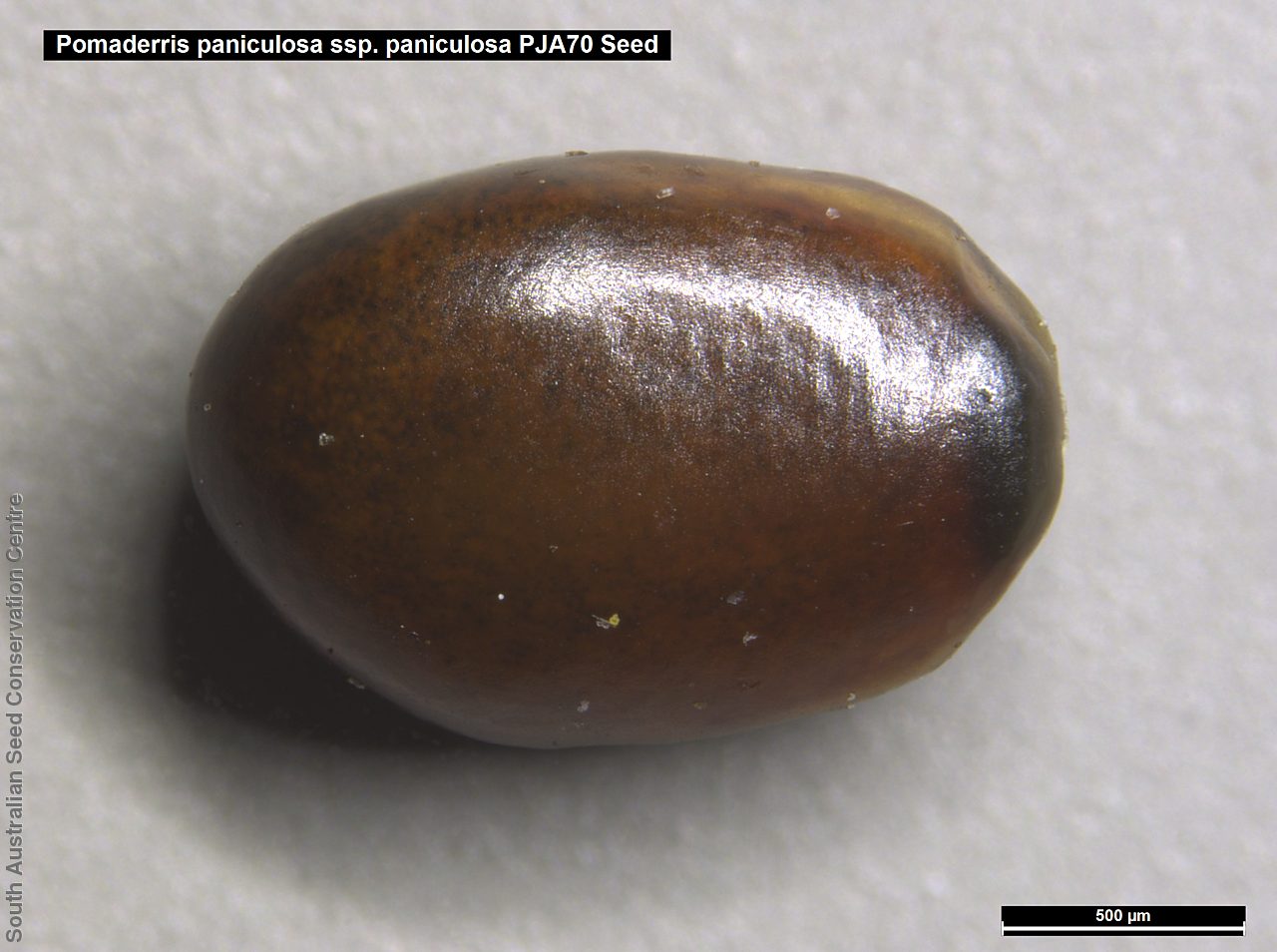
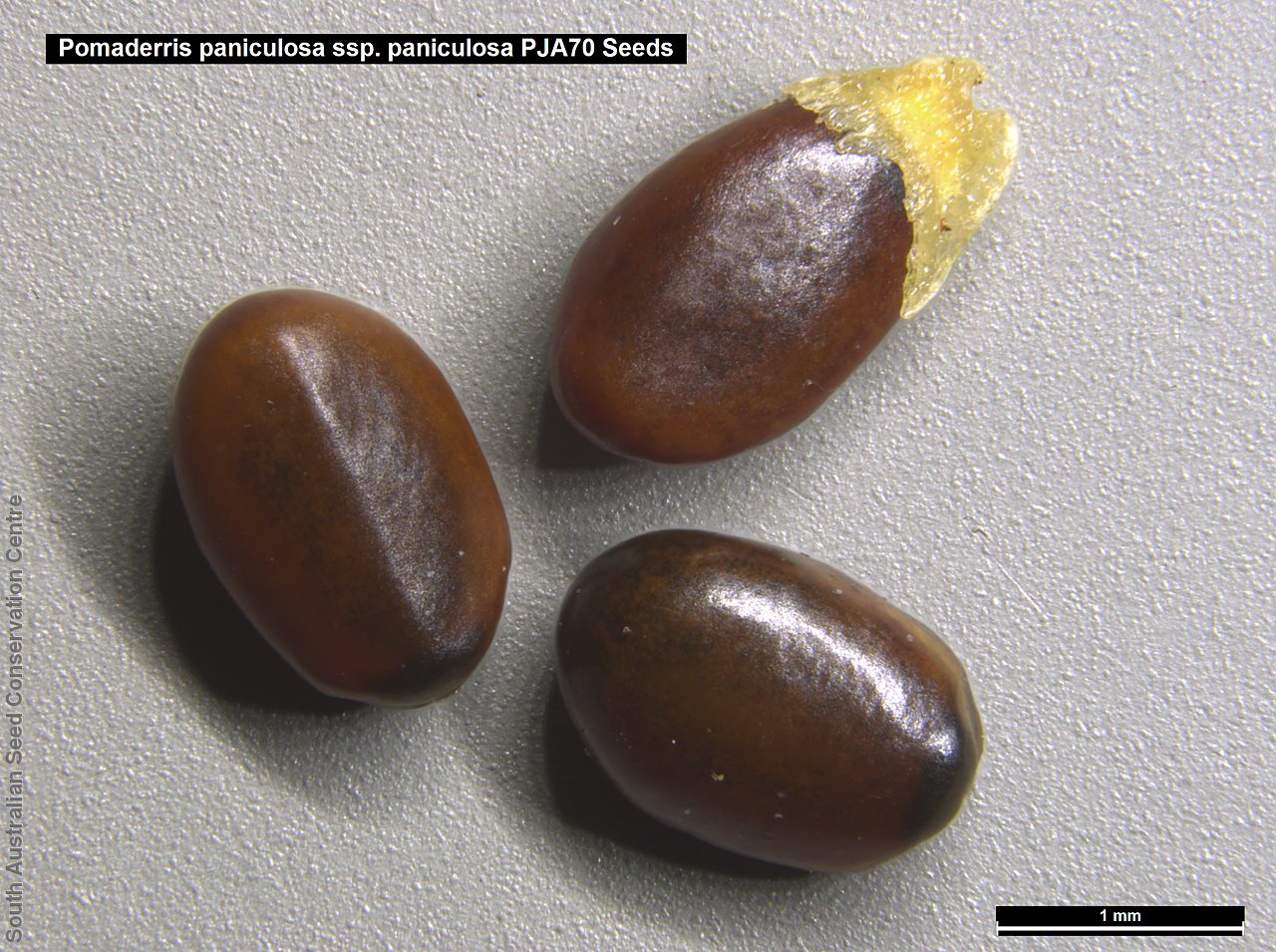

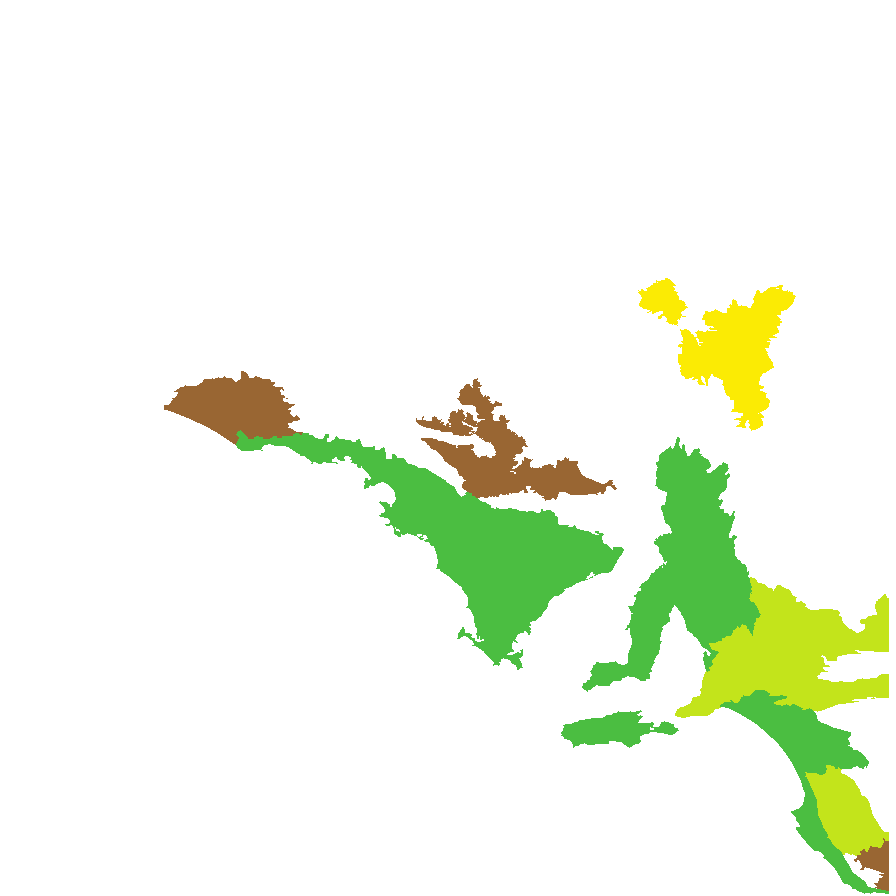
Botanical art
Prior names
Pomaderris oraria, partly
Common names
Inland Pomaderris
Mallee Pomaderris
Etymology
Pomaderris from the Greek 'psma' meaning a lid and 'derris' meaning skin; referring to the membranous valve by which the fruitlets of many species open. Paniculosa from Latin referring to the flower clustered in panicle.
Distribution and status
Found in the southern part of South Australia, growing in a wide range of habitats especially common on limestone. Also found in Western Australia, New South Wales and Victoria. Native. Common in South Australia. rare in the other states.
Herbarium regions: Flinders Ranges, Eyre Peninsula, Northern Lofty, Murray, Yorke Peninsula, Southern Lofty, Kangaroo Island, South Eastern, Green Adelaide
NRM regions: Adelaide and Mount Lofty Ranges, Eyre Peninsula, Kangaroo Island, Northern and Yorke, South Australian Arid Lands, South Australian Murray-Darling Basin, South East
AVH map: SA distribution map (external link)
Plant description
Perennial shrub to 50 cm high. Leaves to 2 cm long and 15 mm wide, ovate to broad- elliptic, margins crenate, often with a whitish border, upper surface glabrous, lower surface tomentose often with rusty stellate hairs. Inflorescence a loose panicle with clusters of yellow flowers, sepals persistant in fruit, petals absent. Flowering between August and November. Fruits are brown papery capsule. Seeds are brown ovoid seed to 2.5 mm long and 1.5 mm wide. Seed embryo type is spatulate fully developed.
Seed collection and propagation
Collect seeds between December and February. Collect fruit heads that are darkening and have a fluffy appearance. Rub the flower parts in your palm to see if there is any seed, which should be brown and hard. Place the heads in a tray and leave to dry for a week. Then rub the heads with your hands or a rubber bung to dislodge the seeds. Use a sieve to separate the unwanted material. Store the seeds with a desiccant such as dried silica beads or dry rice, in an air tight container in a cool and dry place. From one collection, the seed viability was high, at 100%. This species has dormancy that can be overcome with hot water treatment for the seeds to germinate.
| Location | No. of seeds (weight grams) | Number of plants | Date collected | Collection number Collection location | Date stored | % Viability | Storage temperature |
|---|---|---|---|---|---|---|---|
| BGA MSB | 20,500 (33.8 g) 20,500 (33.8 g) | 33 | 18-Dec-2003 | PJA70 Murray | 1-Sep-2004 | 100% | +5°C, -18°C |
| BGA MSB | 4,000 (3.34 g) 4,000 (3.34 g) | 50+ | 25-Nov-2009 | DJD1701 Eyre Peninsula | 1-Jan-2012 | 95% | -18°C |
| BGA | 5,800 (6.48 g) | 10-Dec-2014 | D101214MU | 1-Jan-2016 | 95% | -18°C |
Number of plants: This is the number of plants from which the seeds were collected.
Collection location: The Herbarium of South Australia's region name.
% Viability: Percentage of filled healthy seeds determined by a cut test or x-ray.